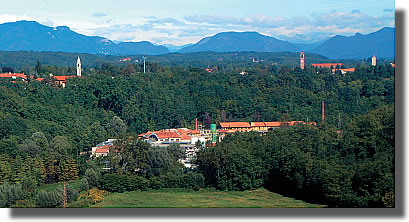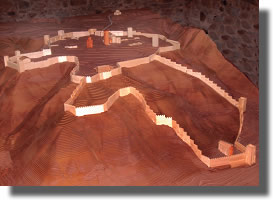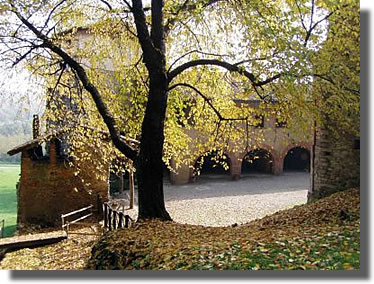CASTELSEPRIO - TORBA
Buffer Zone
Castelseprio and its Territory of pertinence formed one of the most important bulwarks for the control and the defence of the area which allowed access to Pavia, capital of the Longobard kingdom, from the northern alpine passes, that is to say from the territories of the Franks and their allies.
 |
 |
The Castelseprio castrum, a civitas flavia during the Longobard era and seat of a Gastaldo (a King’s Steward), is an important example of the creation of groups of power of urban character and prerogatives in the rural territory. A role which is also reflected in the promotion of architectures and works of value, as in the case of the Church of Santa Maria foris portas and its frescos, of the Monastery of Torba and of the other monuments of the castrum.

The mighty baileys define the precincts of the settlement which develops until Torba, in the valley floor of the Olona Torrent’s plane. The area demarked by the fortifications and by the church of Santa Maria foris portas are included in the site for which the registration to the WHL is requested.

Remain of the walls
In the forest that develops around the castrum’s western limit, near its entrance and that’s included in the proposed buffer zone’s perimeter, there are traces of the Castelseprio borough’s settlement structures, a built-up area attested by medieval documental sources, inside of which a square (platea) is also remembered.
It is an area that is currently very striking as far as the landscape is concerned, with banked areas, occupied by the complexes of the ancient settlement, furrowed by deep incisions in the soil where the ancient routes which conduced to Carnago, Gornate Olona and, at the south, towards Vico Seprio, the area of the current Castelseprio settlement, developed.
The forest, which encloses the Archaeological Park and also occupies the borough’s area, is of great naturalistic value, added to the context.


